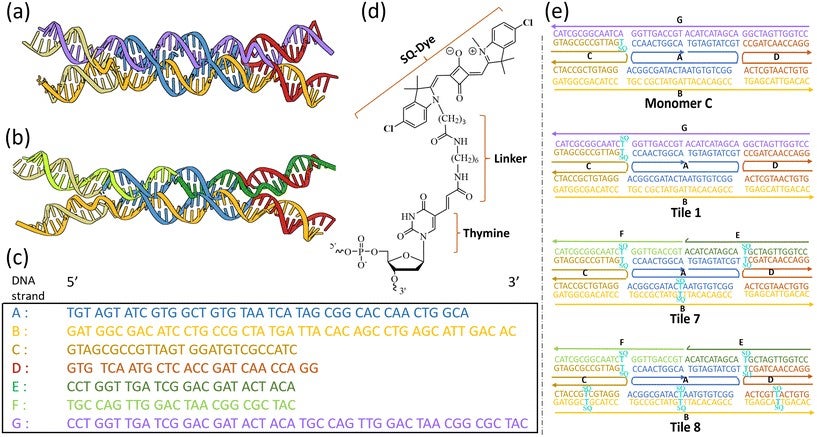Advancing DNA Nanotechnology with Photo—Crosslinking
Researchers at Boise State University have developed a site-specific photo-crosslinking method to enhance the thermal stability and structural uniformity of double crossover (DX) DNA tiles. Crosslinking also promotes uniformity by locking tiles into a defined structure, reducing variability and misfolding. These findings, published in the journal Biomaterials Science, offer a strategy for creating more reliable DNA nanostructures, opening new possibilities for quantum computing, optoelectronics, and energy transfer technologies.

What Did the Scientists Discover?
DNA-based materials enable precise nanostructure design, but their stability remains a challenge under varying conditions. Thermal fluctuations cause denaturation, UV exposure leads to photodegradation, and chemical agents like urea disrupt structural cohesion. Mechanical stresses during fabrication or operation further compromise reliability, limiting applications in optoelectronics, quantum computing, and nanoscale devices.
To address these challenges, the team developed a site-specific thymine–thymine photo-crosslinking strategy in DX tiles using squaraine (SQ) dye aggregates. Strong excitonic interactions within SQ aggregates drive covalent bonding between thymine bases, locking DNA architectures into stable conformations. Unlike conventional methods, this approach provides increased spatial control without phototoxicity, ensuring structural integrity and uniformity.
Thermal denaturation experiments showed increased melting temperatures of the DX tiles containing covalent binding between thymine bases as compared to DX tiles without the thymine crosslinking, confirming enhanced thermal stability. Denaturing PAGE and UV-visible spectroscopy verified successful DNA stabilization. By incorporating SQ-modified thymine pairs, the team engineered ten DX tile variants to assess dye aggregation’s impact on crosslinking. SQ-mediated dimer formation significantly strengthened covalent bonding between proximal thymines. Additionally, the controlled spatial arrangement of dye aggregates facilitates exciton delocalization, crucial for quantum computing applications such as exciton-mediated quantum gates.
The crosslinking provides a more thermally stable DNA tile platform for DNA templated dye aggregates, which, in theory, can potentially be used in quantum information systems.
Impact & Future Applications
The development of a site-specific photo-crosslinking method for DNA double crossover (DX) tiles represents a significant advancement in DNA nanotechnology, particularly in enhancing structural stability and uniformity. The ability to precisely crosslink DNA strands using SQ dye aggregates enables the creation of robust nanostructures that can withstand environmental stressors such as high temperatures, chemical denaturants, and prolonged light exposure. This finding addresses a critical challenge in the field-ensuring the long-term stability and integrity of DNA-based nanomaterials thereby broadening their practical applications.
By improving thermal resilience and structural uniformity, this approach enhances the reliability of DNA-based architectures for cutting-edge applications. In quantum computing, stable and precisely arranged DNA scaffolds can serve as templates for quantum dots or molecular circuits, advancing quantum information processing. In optoelectronics, crosslinked DNA nanostructures can support the development of programmable photonic devices and molecular-scale light- harvesting systems. Additionally, in energy transfer technologies, these stable DNA constructs could be integrated into nanoscale energy conversion and transfer mechanisms, enhancing efficiency in molecular photovoltaics and biosensors.